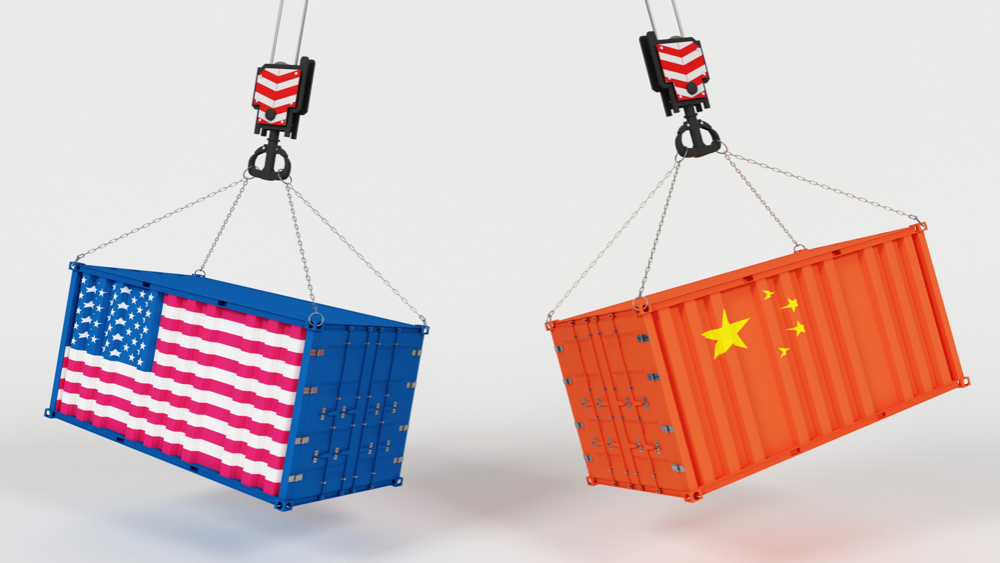There is no greater current threat to the liberal economic order than the trade war between China and the United States. America’s prohibitive tariffs on Chinese electric vehicles, emulated by the European Union and others, are the most recent salvo. If President Trump is re-elected, he promises an additional 60% tariff on China, and 10% on all trading partners, which may deliver the coup de grace to a struggling World Trade Organisation.
The outcome is difficult to predict. A trade war between superpowers will not end in one of the parties submitting. Nor will China disappear like the Soviet Union. That leaves two possibilities: compromise or escalation that results in economic separation.
Outright decoupling would not end trade battles on third markets, but would upend global production chains and carry huge economic costs. Cooperation on climate between the two largest emitters would become even more fraught than it is already. Ominously, the widening schism could strain alliances, embolden revanchists, allow regional arms-races to accelerate and make it harder to contain nuclear proliferation – all trends that are already painfully evident today.
In the worst case, a conflict in Taiwan, the South-China Sea or Ukraine could widen to global war. A major conflict among nuclear powers would, in Henry Kissinger’s words“bring casualties and upheavals impossible to relate to calculable objectives.” Yet, unfortunately, decoupling is where the trade war appears headed.
So, is a trade deal that avoids that outcome possible? Both the US and China remain vitally interested in trade, including with each other. That suggests the answer is yes.
The US remains an open economy, inextricably bound up with the rest of the world. Despite egregious protectionist measures directed at China, US tariff revenue is still only 3% of imports, lower than that of the EU. Some 41 million US jobs are tied to international trade. The largest US firms derive over 40% of their revenues overseas, rising to over 60% in the technology sector. The Americans public is more supportive of trade than the French or Germans.
Furthermore, the economic peril of China’s rise is not what many in Washington have come to believe. The US economy has outgrown the other advanced countries over the last two decades, reflecting its innovative capacity and ability to attract and integrate migrants. In contrast, China’s economy, where income per capita (adjusted for purchasing power) is still just one-third of the US, may be nearing the limits of what its large state sector can deliver. The International Monetary Fund projects China’s GDP to grow at just 3%-4%, about 1.5% faster than the US over the next five years. But that gap may narrow. China’s population is aging fast and projected to fall by 100 million by 2050, and by 600 million by 2100, so it may never establish a meaningful economic lead over the US.
China has become the workshop of the world but is also far less reliant on exports than it once was. Although China’s share of world export markets has increased by 1.5 percentage points since the start of the pandemic, the sharp housing-induced demand slowdown in China and the fiscal-induced demand acceleration in the US account for nearly all the increase. Adjusting for the cycle, China’s exports are no longer on an explosive path, and its share of world markets appears to have stabilised near 14%, a level it achieved eight years ago. Sectors such as electric vehicles may prove an exception, but the ‘China Shock’ on global industry has almost certainly peaked.
China’s global current account surplus, once the main source of global imbalances, has declined sharply. It helps that China has liberalised its trade regime: its most-favoured nation average applied tariff is only 7.5% (the EU’s is 5.1%). China has concluded trade agreements covering about 46% of its trade, a proportion in line with the EU and the US, and is now the largest export market for most countries. In 2020, a new Chinese law eliminated joint venture requirements and opened vast new service sectors to foreign investors. China has consistently conformed with WTO panel rulings that found against it and has joined a compulsory arbitration agreement, a strong signal that it is committed to multilateral rules.
The significance of these trends, some of which are quite recent, is still sinking in. Hawks in Washington have certainly not been swayed by them and nor has China’s slowdown prompted big reforms in Beijing. But provided the rivals remain engaged with the world, the conditions for a deal on trade could materialise. Its essence would be rules that make subsidies transparent and less trade-distortive, in exchange for a phased tariff reductions. Such a deal could mark a return to enforceable multilateral disciplines and reactivation of the WTO Appellate Body.
Faced with climate crisis, nuclear proliferation, the constant risk of escalation and miscalculation, and many other common threats, China and the US do not have long to resolve their differences. Refraining from trade adventurism would be a good start.

